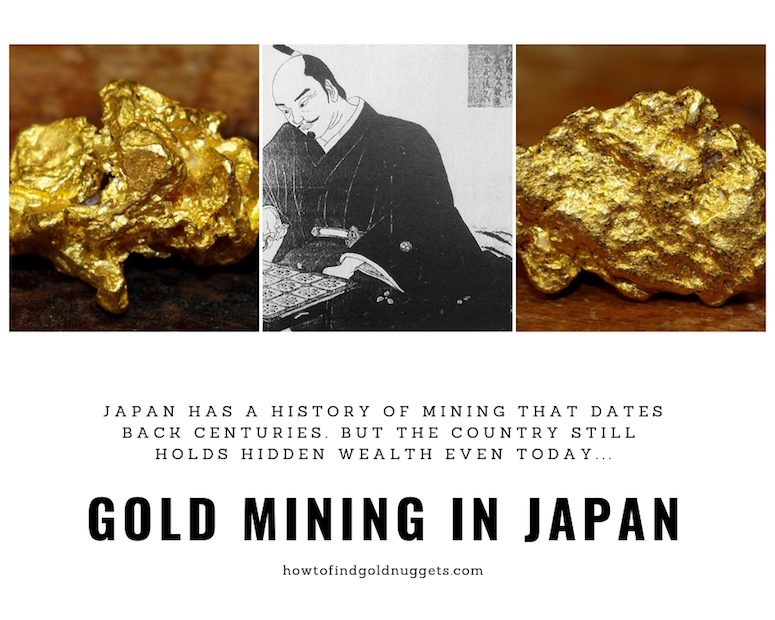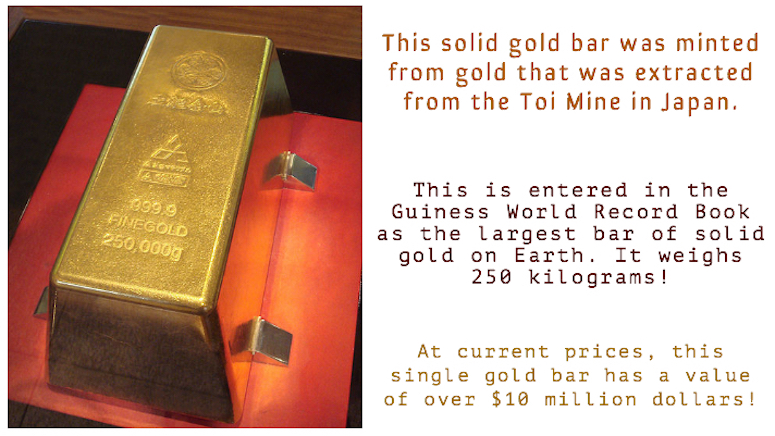
Countries with history of rich mineral resources often rank among the powerful nations.
Japan has been blessed with a wide array of minerals, not least of which is gold. The country is one of the most tectonically active places on Earth, which has created an abundance of rich gold deposits associated with hydrothermal events.
Many of these deposits occur at very shallow depths and have been known and mined for centuries! Lets take a look at some of Japan’s historic gold mining, and the potential that the country holds as a global leader in the gold mining sector.
History of gold mining in Japan
Gold was first discovered in Japan in 749 at Tamayama. This was placer gold that was recovered from many waterways in the region. Japanese miners used traditional gravity-separation methods to recover fine gold particles from the river gravel. This gold was used to construct the famous Buddha statue at Todai-ji.
Centuries later there was mining taking place on the Kesen River.
The first significant gold mine was discovered in the 13th century, and other major discoveries followed. The Sado Kinzan Gold Mine was active for 16th century to the late 19th century. Across these years, the Titao production was estimated to produce 78 tons of gold. The depth of the tunnels reached 800 meters below the surface.
The Toi Gold Mine was another place discovered in the early 1370 and the production was off and on until 1980. This made huge contribution to the Japanese economy. It was the second richest mine after Sado mine.

The amazing gold bar can be seen by taking a tour at the Toi Gold Mine Museum.
The Kinoma gold mine is another historic gold mine worth noting. There was a time when it was called the biggest gold mine in the Orient. The ores were first discovered in 1917 and was mined on and off for about 60 years. The site attracted more than 13,000 miner and their families during that time.
The hard rock mines that exploited the epithermal deposits throughout Japan began much later than placers. These occurred as early as 1550 which focused the Sado area. This area was the primary source of Japanese gold for over 2 centuries, and even now this region continues to be the second largest in the country.
Large scale mining began in early and mid-19th century due to the discovery of new gold deposits at Kounomai and Kushinkino. Several decades of productive gold mining took place.
World War II – Japan’s Gold Production Comes to a Standstill
World War II caused the shutdown of all non-essential mineral mining, and this included all of the active gold mines in Japan. All mining efforts were shifted toward copper, iron, and other metal deemed essential for the war effort (this same occurrence happened in the United States as well).
Immediately following the loss of WW2, there was little in the way of gold mining for the coming decades. Most of the active mines were abandoned and shuttered. Except for a few major exceptions, most of the pre-war gold mines are now inactive.
Also Read: The Largest Chunk of Gold Ever Found on Earth
And: How to Locate Gold Veins in Hard Rock
Commercial Gold Mining and Growing Gold Production
In recent decades there has been testing and exploration in Japan with renewed interest to discovering more potential gold deposits. In 1981, Sumitomo Metal Mining conducted several tests in a rich region of Southern Kyushu, Japan. Rich ore reserves were discovered, and over 6-million ounces of gold has now been mined here to date.
The mine has come to be known as the Hishikari mine, and it may be the richest gold mine in Japan if it is fully exploited.
Despite the historical reputation, the country largely remains unexploited compared to most other gold-rich countries. This is a surprise to many, considering that Japan is an advanced nation.
Today the county remains a geologically rich with huge gold potential has largely remain unexploited.

Next: Huge Gold Deposits Mean that China’s Mining Will Continue
